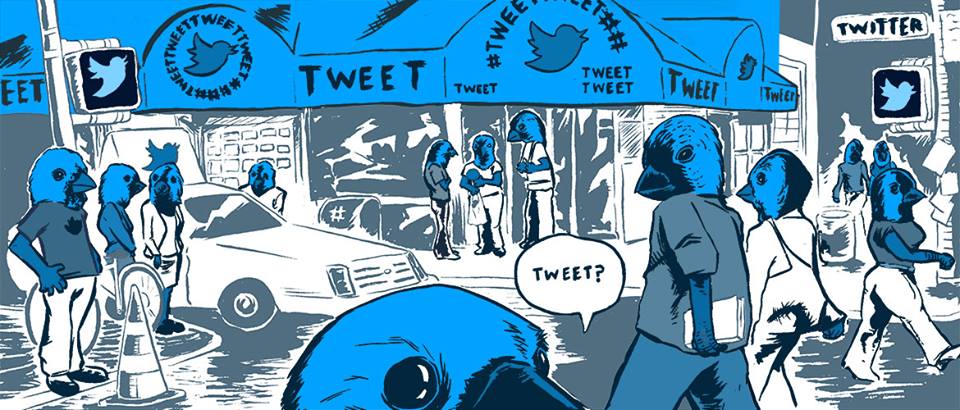Spend time creating a better blog, and your homepage can suck as much as it wants to
When’s the last time that you looked at your homepage?
For some businesses, it’s every day; for others, it’s once every few months.
Why? It’s not that interesting, and it rarely changes. But that’s not why your homepage sucks.
We see your homepage as the suckiest page on your site, for one major reason.
It can only speak to a limited number of customer types or customer personas, as we call them. If you sell point-of-sale equipment to restaurants, can you speak directly to a barber, a restaurateur, and a retail business owner with the same words? Most businesses can’t, and so they choose one persona – their biggest segment of customers – and alienate the rest.
Sure, from your homepage, you can sacrifice simplicity for diversity by asking them who they are, and send them off to dedicated landing pages for each customer persona. Are you a restaurant? Go here! Are you a barber? Go there!
The problem comes in when you need to make sure you’re covering all of your bases, because if you forget a customer persona, then in their minds, you don’t have a product or service for them. You’re a food truck? Pfffft. Get outta here, you’re too broke to afford us!
 Managing a Better Blog by Identifying Customer Personas – Then Targeting Them
Managing a Better Blog by Identifying Customer Personas – Then Targeting Them
One of the first steps in becoming a client is getting your Content Audit done. The very first thing we do when developing an audit is determine your customer personas. So, let’s say you run a company that sells razors. Let’s say you’re DollarShaveClub.com, a razor subscription service that offers a total of six products: three different blades, shave butter, post shave moisturizer, and wipes. (Butt wipes, to be exact!)
Since the shave butter, moisturizer, and wipes can’t be bought separately and are simply add-ons to a razor subscription, I’m going to focus on building personas for the three razor subscriptions: The Humble Twin, The 4x, and The Executive.
You might think that your personas are spelled out for you right here:
- The Humble Twin: “A great basic shaver, for guys who dig simplicity and precision.”
- The 4X: “A gentle shave in a single stroke,” aka “The Lover’s Blade” for dudes who wanna get down.
- The Executive: “It’s like a personal assistant for your face.” Wowza, sounds like the best. I like the best!
In reality, this is only step one. Step two is digging a little deeper, because you betcha, there are more than three types of men out there (and women!) shaving their beards.
To develop a more effective persona, target your potential customer’s problems, so that you can develop content that solves them.
 Pick a Target Persona and Begin Developing a Better Blog
Pick a Target Persona and Begin Developing a Better Blog
Problem: Jack suffers from razor burn. Since he started shaving at age 16, he has always struggled with a red, pimpled neck. He tends to buy the most expensive disposable razors he can find because he knows the less expensive ones will give him razor burn. He’s thinking of growing a beard and never shaving again.
Solution: The Executive Razor.
At this point, we want to attract Jack and guys like him to the website. So we do some keyword research to see what a guy like Jack might be searching for on the web. Here are just 10 results out of hundreds:
what causes razor burn, preventing razor burn, how to avoid razor bumps, shaving irritation neck, how to stop ingrown hairs, ingrown facial hair, how to heal razor bumps, home remedies for razor burn, how to hide razor burn, how to stop itching after shaving
Why do we come up with so many? As the Buddha said, “Thousands of candles can be lit from a single candle, and the life of the candle will not be shortened. Happiness never decreases by being shared.” In other words, as long as you’re helping Jack, you can write as many blog posts about the woes of razor burn as you’d like, and they will continue to help people like Jack.
You’ll notice we’re not including general audience keywords like razor subscription or cheap razor blades although they are perfectly fine for a homepage. What we’re looking for are niche keywords that apply mostly to Jack.
If we decide to create 10 new pages on the site targeting just these 10 keyword terms (there are hundreds), we’d have a shot at bringing in 7,820 new site visits per month from guys like Jack.
But can you add all of those keywords to your homepage? Absolutely not, and don’t let any SEO creeps tell you that you should.
Instead, organically attract that traffic to your site through content campaigns. Create and publish 10 blog posts, one for each of these keywords. Then you’ll promote them through your social media and email channels.
My keyword research above was quick and dirty, but if you have someone skilled at picking the cream of the keyword crop for each of your personas (hint, hint – that’s us) you’ll have a good shot at getting those 7,820 new site visits per month. Did I mention all of that traffic is free? You’re not buying keywords. Let me repeat. You are not buying keywords.
What to Do With All Those Persona Keywords
Seth Godin said at a conference recently, “I can reach 10 times more people writing a blog post than writing a book.” Yes, that Seth Godin – speaker, bestselling author of 17 books, and member of the Direct Marketing Hall of Fame.
As you probably know by now, I couldn’t agree more. I think you can reach 10 times more people writing a blog than pretty much anything. The reason is that when you use blogging as a marketing platform – with the process I’m explaining to you now – you generate website traffic that doesn’t expire in an hour or a day.
Google will continue to send you traffic for years, because Google loves blogs. They love content. They love content that’s being constantly updated. They like informative content. They like pages that solve a problem. And sorry, kid, your homepage just doesn’t fit the bill.
Unlike many SEO strategies, this process of developing content is supported by the big Google God itself. It’s exactly what Google has been telling businesses to do – create quality content.
A major bonus is that if Dollar Shave Club chose to roll out their blog in the way I’m suggesting, suddenly they’re the resource that guys go to for shaving advice. It’s a site that they refer their friends to, and the viral marketing begins. Viral marketing is good, too, even though it’s not as scientific.
So, let’s see how we might turn these keywords into blog posts that attract guys like Jack, whose main concern is razor burn.
- What Causes Razor Burn in Men?
- 10 Steps for Preventing Razor Burn With a Good Razor
- How to Avoid Razor Bumps: Ingrown Hairs, Be Gone!
- Shaving Irritation: Neck Woes and Embarrassing Tales
- How to Stop Ingrown Hairs From Ruining Your Life
- What an Ingrown Facial Hair Looks Like
- How to Heal Razor Bumps Naturally
- 10 Home Remedies for Razor Burn
- How to Hide Razor Burn Before a Big Event
- Men Ask: How to Stop Itching After Shaving
In reality, when I started writing this post these were the five blog posts that Dollar Shave Club had recently posted to their blog. I could tell by reviewing them that the goal of their blog was mostly for fun. That’s cool, too – but it’s similar to having a sucky homepage. Sorry, guys.
In its current state, this is content that someone might come across if they’re already on the site, or if they follow Dollar Shave Club on Twitter. As you’ll discover, they’re not meant to generate new sales:
- Deep Dish & Hand-Tossed Are Not Delicious Razor Options
- It’s Dollar Dog Night at the Ball Park
- Nobody Wants a Gnarly Shave, Brah
- Unless Your Name is Stilton B. Roquefort, You Don’t Want to Get Shredded
- Sadie, You So Smart
Since then, they’ve amped up their blogging game, but the topics are still pretty silly and seemingly untargeted. For example:
- Why Call the Doctor if an Erection Lasts More than Four Hours
- Cinco de Mayo Ceviche, with a Caribbean Twist
- Office Cliche Etymology: “Bandwidth”
And these are all great posts, but where’s the shaving advice? Where there’s room for appetizer recipes, there’s room for content that’s related to the actual niche you’re in.
And somebody even thought to add a call to action … to email them and let them know about other office cliches and recipes they should consider for the blog. Maybe they give away a free trial to anybody who emails, maybe not. But that’s certainly prime real estate for some indication that they sell razors.
Unfortunately, the beautiful blog they created, complete with moose and guns and velvet couches is being drastically underused, and a call to action for razors doesn’t make sense in a blog post about erections, ceviche and office cliches. Here’s an example of what they could be posting:
But Wait, What’s the Goal?
Now don’t skip over this part, because there’s blogging and then there are content campaigns. Currently, the Dollar Shave Club is blogging. What we’re suggesting they develop here is a content campaign.
In a content campaign, when the reader scrolls down, they’ll find a call to action, which is completely contextual, not a random ad for the Dollar Shave Club. If you want better conversion rates, your text ads, which interrupt the reader for just a second, will promote a related product – the one that solves their problem.

The reason we don’t call this blogging is because each one of these articles is truly a marketing campaign, a system for getting new leads, customers, or subscribers. Blogging is for fun – content campaigns produce a return on your investment. Don’t all businesses want a return on their investment?
We want to make sure that every post has a goal. For this one, it’s to sell Jack on the Executive Razor. For other personas – and other keywords – it might be to sell them a different razor. Each product can have multiple personas, but each content campaign has one.
The next step is to create those multiple customer personas and repeat the process. If you have 10 different personas, you could be driving tens to hundreds of thousands of unique visitors to your site every month just through your blog. Depending on your niche and keywords, you could blow those numbers out of the park!
That’s Why Your Homepage Sucks
This is the part where I remind you why it’s okay that your homepage sucks. It’s meant to suck. Ours sucks. Everybody’s sucks. No matter how beautifully designed a website is, unless you have an extremely niche audience, your website is limited to its one voice … so it sucks.
But your blog doesn’t need to suck. It can be a big moneymaker in your business – if you want it to be.
When people ask us how our clients get 70% or more of their new customers, leads, and subscribers through the better blogs we create for them, this is just one fraction of the magic, and it’s a major part of our Content Audit, which we believe every business should complete before starting a blog. That is, if you want to get any return on your investment.
The next part is our magical social media strategy. And you can learn more about that here.
Want us to tell you how to improve your company blog and turn it into your greatest source of online sales? Order a Content Audit.
This article was originally written in 2016 and has been updated.














